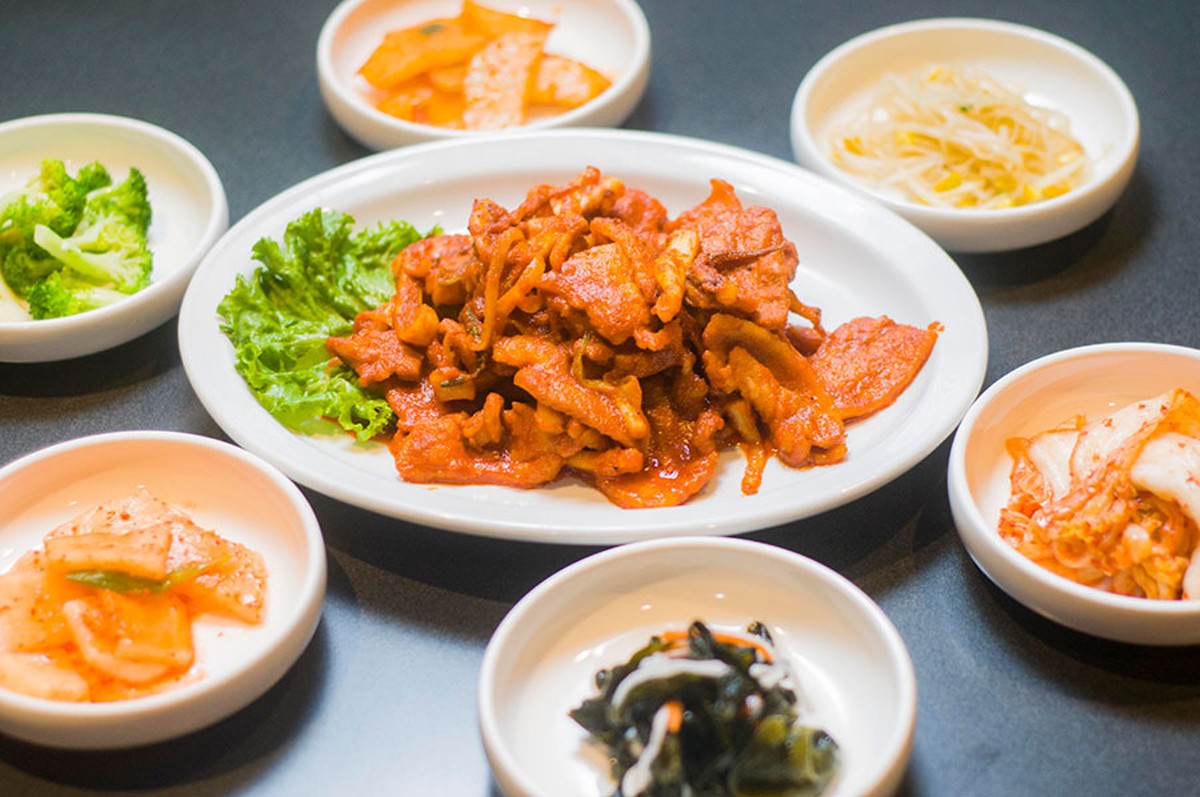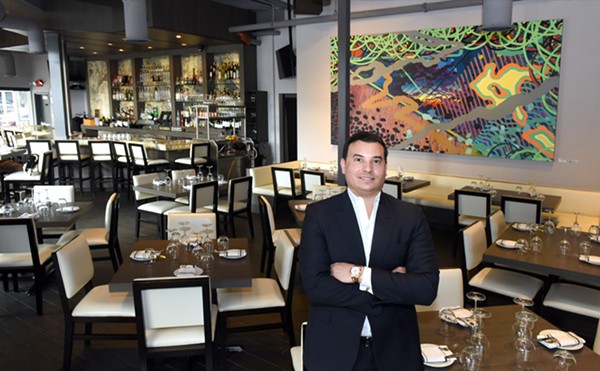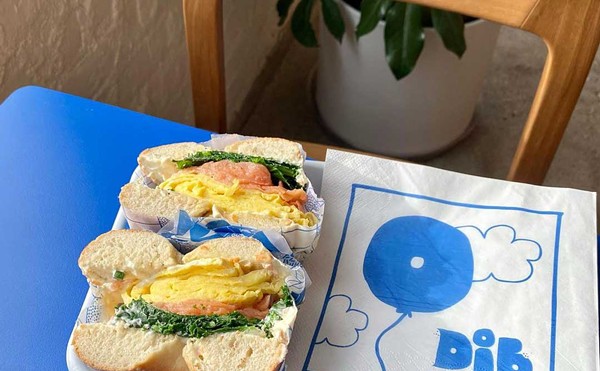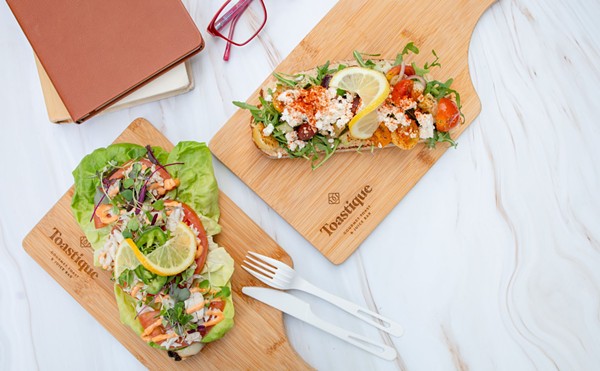One of the treats about eating Korean food is the array of a half-dozen side dishes — banchan — that come with the meal. That the little plates of banchan will appear soon after you order is just assumed by the mostly Korean clientele at Korea Palace — you won't find a reference to them on the menu. Most are vegetables such as radish, mustard greens, sprouts, or broccoli, served plain or with kimchi, with a few ringers. When we visited Korea Palace, we got some different banchan treats each night, indicating that what comes out of the kitchen is the chef's choice.
You might try asking for a bowl of steamed eggs, a bland but satisfying counterpoint to the spicier flavors that will dominate the meal. One evening we got a tasty, slippery jelly made from acorn powder; another evening we got a head of romaine. That visit also featured a little dish of peeled garlic cloves served next to a vinegary sauce.
At the end of the meal one night, each diner received a little bottle of sweet-sour yogurt; on another, just a peppermint. There must be a rule about which orders are accompanied by a strong, good broth — in my parties, one diner got it once. A more exacting customer could question the server closely about this, and might still get some surprises.
The most affordable dishes to order from Korea Palace's long menu are the familiar bi bim baps, with a crust of rice on the bottom of a super-hot, cast-iron bowl. Our seafood version was generous with the scallops, shrimp, and octopus, plus white rice, carrots, and zucchini. But the most entertaining way to go is barbecue, in which meat and scallions are flash-sauteed on a sunken stainless steel grill in the middle of your table. Turn the pieces with tongs and serve yourself.
Ribeye, short ribs, or pork belly can be pre-marinated in the house barbecue sauce — or not. Thinly sliced, marinated ribeye (bulgogi) had much more flavor than marinated, deboned, and cubed short ribs, though the latter cost 35 percent more. The marinade is slightly sweet. Unmarinated pork belly is also possible, and the online menu offers roasted beef tongue. I saw larger parties who had chosen what looked like a parade of all possible proteins, which they were happily grilling in turn.
From the grill I actually liked best a pork belly and squid "Oh Sam Bulgogi" that was not cooked at the table, though the pork's blessed fattiness tended to get lost under the spicy red sauce.
In South Korea, by the way, the bulgogi flavor is so popular that hamburger patties are marinated in the sauce (based on soy sauce) and sold at fast-food joints.
With its barbecue, Korea Palace serves purple rice mixed with white — a cost-conscious measure, according to our server. Purple is probably healthier than white, with its outer coating of bran intact, and it's certainly pretty.
Soups and stews are numerous, incorporating everything from tripe to tofu, peanut butter to bean paste, and whole Cornish hen. If I'd been in the mood for sweets, I'd have ordered that hen stuffed with rice, ginseng, and dates. Instead I got black goat with vegetables and mushrooms. Served in a boiling beef broth that continued boiling for a while, the goat flavor shone through despite the other strong tastes. Black goat, I learned later, is considered a health food in Korea. Any possible medicinal effects aside, goat is always worth trying as a break from our more usual meats.
Fish stews include monkfish, skate, and cod. The latter contains plenty of tofu and zucchini, and is one of the spicier offerings, enough to leave a pleasant afterburn on the lips, but not enough to be a turnoff.
A crowd pleaser is chicken katsu donburi, an adaptation of Japanese pork katsu, because who doesn't like a battered and deep-fried crunchy chicken breast served over rice? "Kid's Favorite!" says the website.
The Palace offers the Korean traditional rice spirit soju, unfiltered rice wines, and Japanese beers. I tried a dark raspberry wine, Bohae Bokbunja, available by the bottle ($24.95 for 375 ml), and found it to be just what you would expect of raspberry wine, though the sweetness becomes less cloying as your meal proceeds.
There's also a rice wine, Sansachun, described as being made with haws (Chinese hawthorn berries) and cornstarch. I doubted the cornstarch; a few minutes of research revealed that Sansachun comes from cornus fruits, from the dogwood tree. Like goat, it's reputed to be medicinal.
So many restaurants, so little time. Find out the latest Detroit dining news with our weekly food newsletter delivered every Friday morning.







